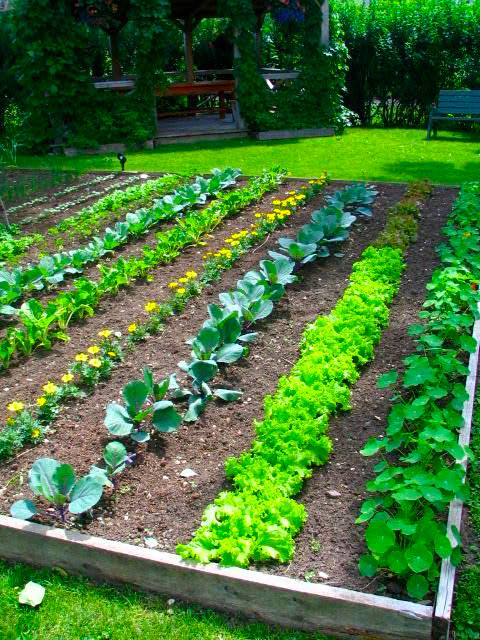Whether the motivation is a greater connection to food, economics or a societal shift to bring back a nostalgic activity, community, school and backyard vegetable gardens are hot.
When I was a kid I used to spend a week every summer at my grandparents’ place in Campbellford, Ontario (that’s in Canada). My grandfather was a streetcar driver from Toronto and retired to the small town to be close to a couple of his siblings, one of whom, my great aunt Kay, had a huge vegetable garden. As Aunt Kay got older she couldn’t take care of the garden so my grandparents took it over. They had lots of time, loved to garden and were on a fixed retirement income – gardening was a way fro them to save food dollars.
And every year they enlisted in my help to water, weed and pick in my week away from the city.
I spent a lot of time messing around with beans and tomatoes, eating them right off the vines. Aunt Kay’s property backed onto a provincial park and there were a lot of animals around, especially deer. Pretty well every time I was there I remember my grandparents lamenting about the plant damage caused by animals. I doubt they were concerned about pathogenic E. coli from the deer droppings. If they were, it never came up in our discussions.
Sabrina Tavernise of the New York Times writes today about the increase in interest and resurgence of vegetable gardening, especially with the uncertainty of the economy.
“You see a lot more people turning up ground,” said Wanda Hamilton, 61, a lifelong gardener who sells her surplus vegetables at the farmers’ market in West Liberty, a small town in the Appalachian foothills. “It’s the economy. You just can’t afford to shop at the store anymore.”
“Our sales have skyrocketed,” said George Ball, chief executive of Burpee, one of the largest vegetable-seed retailers. The jump, he said, began around the time Lehman Brothers collapsed in 2008, when anxiety about money started to rise.
Another motivation for bigger gardens: the financial uncertainty that comes with retirement.
Brenda Engle, 56, an apparel factory employee, and her husband, Leon, 64, a former telecommunications company employee who works at Wal-Mart, are trying to squeeze their budget down to the size of their future retirement check.
They grew a year’s worth of beans. “We want to be self-sufficient,” said Ms. Engle, who has even started making her own laundry detergent.
Her garden is also therapy.
“When I’m in the garden,” she said, “the world is gone.”
Community and school gardens are also growing in popularity and food safety within those systems is can be even more problematic if not focused on. These gardens can be at sites with easy access for pathogen-carrying animals, have multiple folks involved in tending and picking and sometimes use less than ideal water sources.
Ashley Chaifetz, a PhD student at UNC-Chapel Hill has been working with me on a document focused on risk-reduction steps at school and community gardens – the material is being developed through working directly with garden organizers and will be tested with gardeners in the next couple of weeks. The best practices document provide evidence-based information on risks and provide practical steps that gardeners can take to reduce the likelihood of illnesses. I’ll post it up here in a couple of weeks when it’s ready to go.
